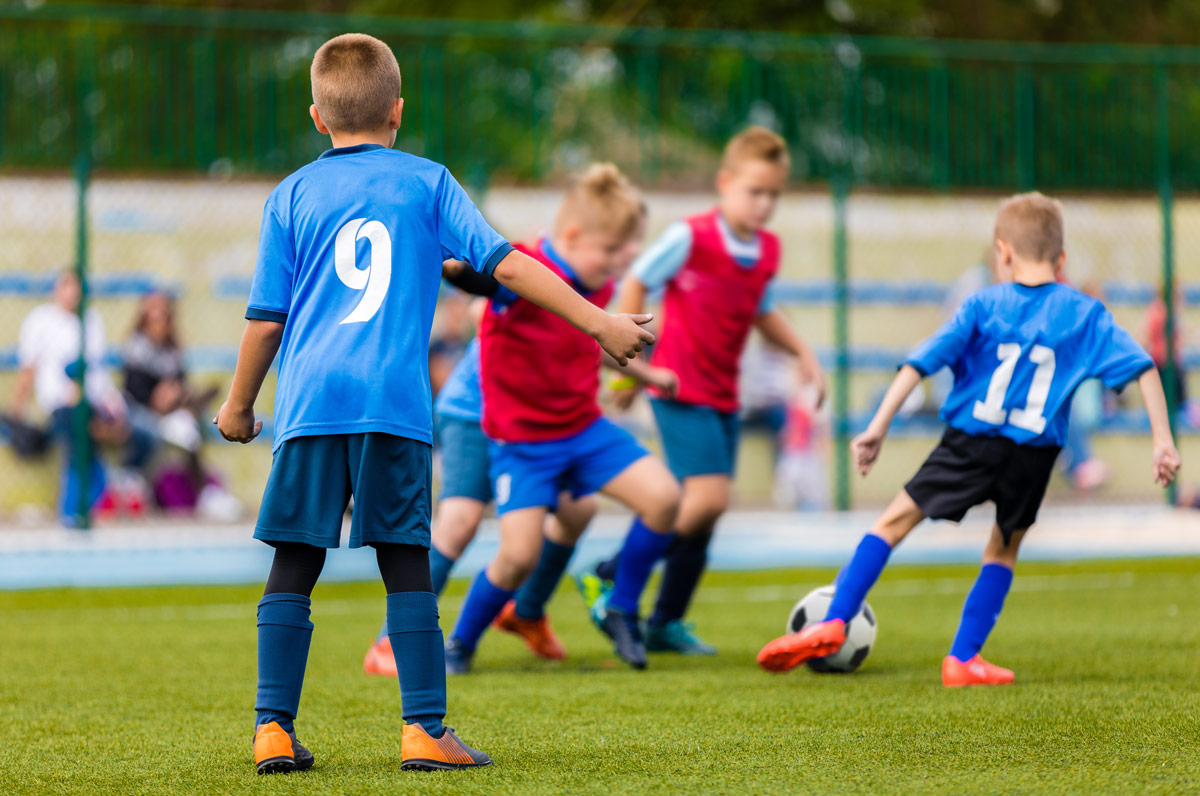Youth Soccer Series: A Parent’s Guide to Core Positions and Rules – Part 1
Core Soccer Positions
Part 1
According to U.S. Youth Soccer, U6 to U12 players use smaller fields and modified rules to help make the game safer, more fun, and easier to learn.
All U6 to U19 players must have the opportunity to play 50% of the game, as determined by the coach. The number of youth soccer core position players on the field increases as they get older:
- U6 teams have a maximum of four players, and there are no goalkeepers.
- U8 teams have a maximum of six players, including a goalkeeper.
- U10 teams have a maximum of seven players, including a goalkeeper.
- U12 teams have a maximum of eight players, including a goalkeeper.
- U14 to U19 teams have a maximum of 11 players, including a goalkeeper.
Goalkeeper
The goalkeeper is not part of the U6 roster, as players this young are just getting the hang of dribbling and passing the ball around the field to each other. Instead, U6 attackers kick the ball directly into the goal, sometimes between two cones.
From U8 on up, the goalkeeper is the last player between the attackers and the goal. To reduce pressure on them, it’s important for young goalies to remember that the ball must get past all their teammates before it gets to them.
Goalkeepers, also known as “goalies” or “keepers,” are the only required youth soccer core position players on a team. If the goalie must leave the game, another player must take their place. They are also the only player allowed to touch the ball with their hands or arms. After retrieving the ball in the goalkeeper zone, goalies may clear the ball by bowling, passing, or throwing the ball to another teammate. They can also clear the ball toward the other half of the field by forcefully kicking it.
The goalkeeper must wear a jersey that is distinctive from the other players. Goalie jerseys can have padding on the arms, chest, and shoulders because they often come in contact with the ground while making saves. It’s recommended that they wear padded goalie gloves with gripping palms to help them secure the ball, especially on wet grass.
Defenders
Defenders are the last set of players to prevent the attackers from scoring on their goal. Depending on the age group, youth teams can have two defenders positioned in front of the goal, one on each side of the goalie. Also called “backs,” these players must follow the play from the time the ball starts moving toward them.
To clear the ball from their zone to the other team’s goal, a defender can pass the ball to the other defender, a midfielder, or a forward (striker). They can also boot the ball with a long kick into the other half of the field.
As players advance, teams will field four defenders, two in the center and two outside defenders (fullbacks). Sweepers can intercept — or sweep — the ball from the offense that gets behind the backs and near their own goal.
Fullbacks can also act as wingbacks by going on the offensive on the sides, or wings, of the field. Wingbacks are generally strong runners.
Regardless of the age group, defenders want to make the field small and reduce the other team’s options. To avoid confusion, defenders should communicate with each other to confirm who is going for the ball and who is protecting the goalie.
Midfielders
Youth soccer teams have three kinds of midfielders (mids) who are positioned in the center of the field: defensive, center, and attacking midfielders. Defensive midfielders are positioned in front of the defenders so they can strip the ball from the opposing attackers. They can then pass the ball to a forward or attacking midfielder.
Center midfielders are the team’s versatile and creative pivot points. They have the ability to defend, pass to an attacker, or score a goal. Attacking midfielders are stationed closer to the opponent’s defensive zone, just behind the forwards, enabling them to help their forwards attack their offensive zone.
Forwards/Strikers
Also known as attackers, forwards or strikers are stationed closest to the opponent’s goal and score most of a team’s goals. Teams usually have two forwards on the field. One is positioned just behind the last defender in an onside position (for U12 and older), and the other is positioned to score or assist.
Center forwards usually receive the most cross passes from the second forward and assists from the midfielder. As a result, they usually score the most goals.
Second forwards/strikers can play as a semi-midfielder when needed. They often send cross passes and other assists to the center forward.
Wingers are forwards or midfielders who are stationed near the outside of the field. They are good runners who can make cross passes to the center forward near the goal, and they can attack the goal from the wing or outside of the field.
Would you like to know more about soccer positions?
Continue learning more about the different positions and rules of soccer as a parent of a player or potential player by checking out more posts in this series. You can read part 2, part 3, and part 4 on other related topics!
We’d like to hear from you and answer any questions you may have.
You can also sign your child up for an upcoming soccer league tryout here.
Share This Post

